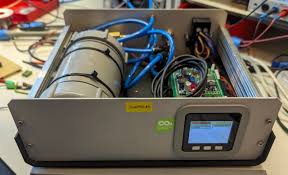In the world of modern technology, PID controllers are silent heroes, working behind the scenes to make everything from cars to your home appliances function smoothly. If you’re wondering what a PID controller is, don’t worry, it’s simpler than it sounds. PID stands for Proportional, Integral, and Derivative. These controllers are used to keep systems stable and running efficiently by balancing various inputs and outputs. Think of it like a chef adjusting heat, seasoning, and time to cook the perfect meal.

This article will give you an easy-to-understand overview of PID controllers, how technology is improving them, and their impact on everyday life. By the time you finish reading, you’ll not only know what PID controllers are but also appreciate how they improve the gadgets and machines we rely on.
What Is a PID Controller?
Imagine driving a car and trying to maintain a constant speed. If you step on the gas too hard, the car speeds up quickly. If you let off the gas entirely, the car slows down. A PID controller works like a smart assistant for your foot, making small adjustments to keep your speed steady.
In technical terms:
- Proportional Control responds to how far off the system is from the desired state.
- Integral Control looks at past mistakes to ensure the system doesn’t repeat them.
- Derivative Control predicts future errors based on current trends.
By combining these three elements, PID controllers create a balanced approach to problem-solving.
How Technology Improves PID Controllers
Modern technology has made PID controllers faster, smarter, and more adaptable. Here’s how:
1. Artificial Intelligence (AI) and Machine Learning
AI is revolutionizing PID controllers by making them capable of learning from data. For example, AI-enhanced controllers in autonomous cars learn from different driving conditions to make smoother adjustments. This reduces energy use and enhances safety.
2. Cloud Integration
By connecting PID controllers to the cloud, systems can now communicate with each other. For example, a smart thermostat in your home can analyze weather forecasts from the cloud to adjust your heating system in advance.
3. Miniaturization
Advances in electronics have made it possible to fit PID controllers into small devices. For instance, medical equipment like insulin pumps now uses tiny PID controllers to regulate insulin flow with high precision.
4. IoT Connectivity
The Internet of Things (IoT) connects devices to share information. A PID controller in a factory machine can now send performance data to maintenance teams, helping predict issues before they occur.
Real-Life Applications of PID Controllers
You might not notice them, but PID controllers are all around you. Let’s explore some examples to see how they improve our lives.
| Area | How PID Controllers Help |
|---|---|
| Home Appliances | Your washing machine uses a PID controller to balance the drum’s speed, preventing it from shaking. |
| Transportation | Cruise control in cars relies on PID to maintain your desired speed even on hilly roads. |
| Healthcare | Medical ventilators use PID controllers to regulate airflow for patients, ensuring safe and effective treatment. |
| Manufacturing | Robotics in factories use PID for precise movements, making assembly lines more efficient. |
Why Are PID Controllers Important?
Without PID controllers, systems would be chaotic. Imagine driving a car where the speed keeps fluctuating wildly or using an air conditioner that either freezes you or does nothing. PID controllers bring order by balancing inputs to maintain stability.

A Fun Twist
Think about balancing a seesaw. If you’re too slow to adjust, it tips over. If you’re too quick, it wobbles uncontrollably. A PID controller is like the perfect friend who knows exactly when to lean and how much.
The Role of Research in PID Controller Advancements
Studies show that optimized PID controllers can save up to 30% in energy costs for industrial systems. A report published in the Journal of Control Systems highlighted how advanced controllers reduced power usage in manufacturing plants while maintaining output quality.
In another study, researchers used AI to enhance PID controllers in drones, making them more stable in windy conditions. This breakthrough is now being applied to delivery drones used by companies like Amazon.
Tips for Understanding PID Controllers Better
- Start Small: Observe how a thermostat maintains room temperature. It’s a simple PID controller at work.
- Relate to Daily Life: Think of PID controllers as the brain behind your favorite gadgets, ensuring they function as expected.
- Follow Trends: Keep an eye on how AI and IoT are shaping the future of these controllers.
In Short
PID controllers might not be as flashy as smartphones or gaming consoles, but they are the backbone of many modern technologies. Without them, our lives would be far less convenient. The next time you enjoy a smooth car ride or a perfectly cooked meal, remember the humble PID controller working behind the scenes.
By understanding and appreciating how technology enhances PID controllers, we can see how even small innovations have a big impact on our everyday lives.




[…] Also Read: How Technology Enhances PID Controllers for Everyday Use […]